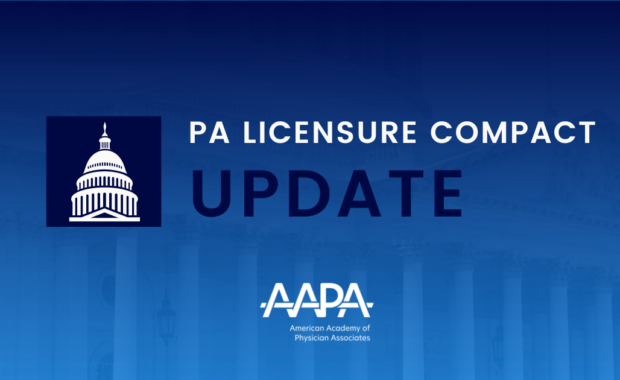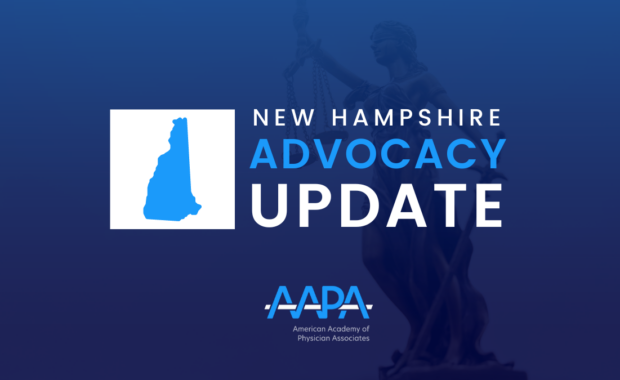Top 5 Reimbursement Questions You’ve Always Wanted to Ask
Questions Range From “Incident to” Billing to Telemedicine Requirements
December 16, 2019
AAPA’s reimbursement department frequently gets questions from the PA community. Here are five questions we receive often. We hope you find the answers enlightening.
What’s the difference between “incident to” and shared visit billing?
“Incident to” and shared visit (also referred to as split/shared visit) are Medicare billing provisions that allow reimbursement for services delivered by PAs and NPs at 100% of the physician fee schedule, as opposed to the typical 85%, provided certain criteria are met. When “incident to” and shared visit billing are utilized, care provided by a PA is attributed to a physician with whom they work.
“Incident to” is a Medicare billing provision in an office or clinic. The following criteria must be met for “incident to” billing:
- The service must be one typically performed in the physician’s office.
- The service must be within the PA’s scope of practice and in accordance with state law.
- The physician (or another physician within the practice) must be in the suite of offices when a PA renders the service.
- The physician must personally treat the patient and establish the diagnosis on the patient’s first visit or for any established patient who comes to the practice with a new medical condition. PAs are then allowed to see the patient on subsequent visits for the purposes of billing “incident to.”
- The physician is responsible for the overall care of the patient and should perform services at a frequency that reflects his or her active and ongoing participation in the management of the patient’s course of treatment.
- The PA must represent a direct financial expense to the physician billing (W-2, leased employee or independent contractor).
Due to the way services billed “incident to” are reported through Medicare’s claims process, a substantial percentage of medical services delivered to Medicare beneficiaries by PAs and NPs are attributed to physicians. When this occurs, it is nearly impossible to accurately identify the type, volume or quality of medical services delivered by PAs and NPs. This lack of transparency has a negative impact on patients, health policy researchers, the Medicare program and PAs and NPs.
A shared visit is a Medicare billing provision in which both a PA and physician participate in E/M services in a hospital or facility setting. The following criteria must be met for shared visit billing:
- The services provided must be E/M services, and not procedures or critical care services.
- The physician must provide and clearly document at least some face-to-face part of the E/M visit (some portion of the history, examination, or medical decision making). Simply reviewing or signing the patient’s chart is not sufficient.
- Both the PA and physician must treat the patient on the same calendar day (not just within a 24-hour period).
- Both the PA and the physician must work for the same entity.
While this is a brief summary of “incident to” and shared visit billing, additional nuances and circumstance-based requirements apply. For more information on these billing provisions, please consult the Essential Guide to PA Reimbursement, or contact AAPA’s reimbursement team.
How can I protect myself from allegations of fraud and abuse due to improper billing?
Fraud is intentional deception or misrepresentation of services that the individual knows to be inappropriate or illegal and that could result in unauthorized reimbursement to the practice. Abuse relates to negligence or the allowance of activities or actions that are not supported by good medical or practice guidelines. Lack of attention to proper billing rules can lead to the recoupment of reimbursement, fines, jail time, and exclusion from participating in federal health care programs.
Most PAs, physicians, and APRNs don’t see the actual claim submitted for their services. However, health care professionals that enroll in Medicare and other federal programs are ultimately responsible for the billing activities concerning patients treated, despite not submitting the claims for services themselves. For this reason, it is important for PAs to convey appropriate reimbursement practices for the profession to their billing department. Use of AAPA’s Essential Guide to PA Reimbursement can help answer most questions that you or an employer may have. If questions by your employer persist, encourage the billing department to reach out to you or AAPA with any billing practice they find ambiguous or concerning.
Are there ways to demonstrate my value to an employer?
In a time when performance evaluation and income are increasingly dependent on determinations of care quality and provider contribution, employers have an interest in knowing the value, quality, and quantity of care their health professionals provide. There are no perfect measures for a PA’s contribution to a practice, but rather your value to an employer can be demonstrated through a combination of various measures and concepts. These include collections (what a practice receives from payers), number of patient encounters, relative value units, improvements in patient access and increased group efficiency, patient satisfaction, quality or outcome measures, as well as less quantifiable benefits such as the freeing up of physician time, increased coordination, and the facilitation of patient communications. However, we should note that some metrics depend on accurate and comprehensive attribution of the services provided. Use of billing practices that attribute some or all of a PA’s services to the physician may undervalue a PA’s contribution. While a health professional’s productivity is by no means measured only by claims reimbursement, if the full range of medical and surgical services is not appropriately tracked, then it is virtually impossible to determine a PA’s true level of productivity or contribution to the practice.
What is the recent change to Medicare’s physician supervision guidelines for PAs?
Medicare requirements regarding how PAs work with physicians will change beginning January 1, 2020. Language contained in the 2020 Physician Fee Schedule final rule modifies Medicare policy by largely deferring to state law in terms of the professional working relationship PAs have with physicians. That is, if a state uses a term such as collaboration to describe the relationship between PAs and physicians, the Medicare program will allow that to meet the Medicare supervision requirement. Other states might use different terms/concepts to describe the working relationship, which will also meet Medicare guidelines. This Medicare policy change is specific to the PA-physician relationship and does not replace other aspects of existing Medicare policy or supersede individual PA state law.
What are the requirements for telemedicine services under Medicare?
Medicare covers certain telemedicine services performed by PAs, physicians, and certain other healthcare professionals using real-time audiovisual communication, such as consultations, office visits, individual psychotherapy and pharmacologic management.
Individuals living in rural HPSAs and counties not classified as metropolitan statistical areas are eligible for these services, as are patients of healthcare entities participating in federal telemedicine demonstration projects if they are located at an eligible originating site. Providers at the distant site submit claims for telemedicine services using the appropriate CPT code or Health Care Common Procedure Coding System (HCPCS) code. Use of the telehealth Place of Service (POS) Code 02 certifies that the service meets the telehealth requirements. The CQ modifier is used on professional claims when providers are participating in the federal telemedicine demonstration programs. New covered telehealth services are added each year in CMS’ Physician Fee Schedule final rule.
More Resources
Essential Guide to PA Reimbursement
Thank you for reading AAPA’s News Central
You have 2 articles left this month. Create a free account to read more stories, or become a member for more access to exclusive benefits! Already have an account? Log in.



